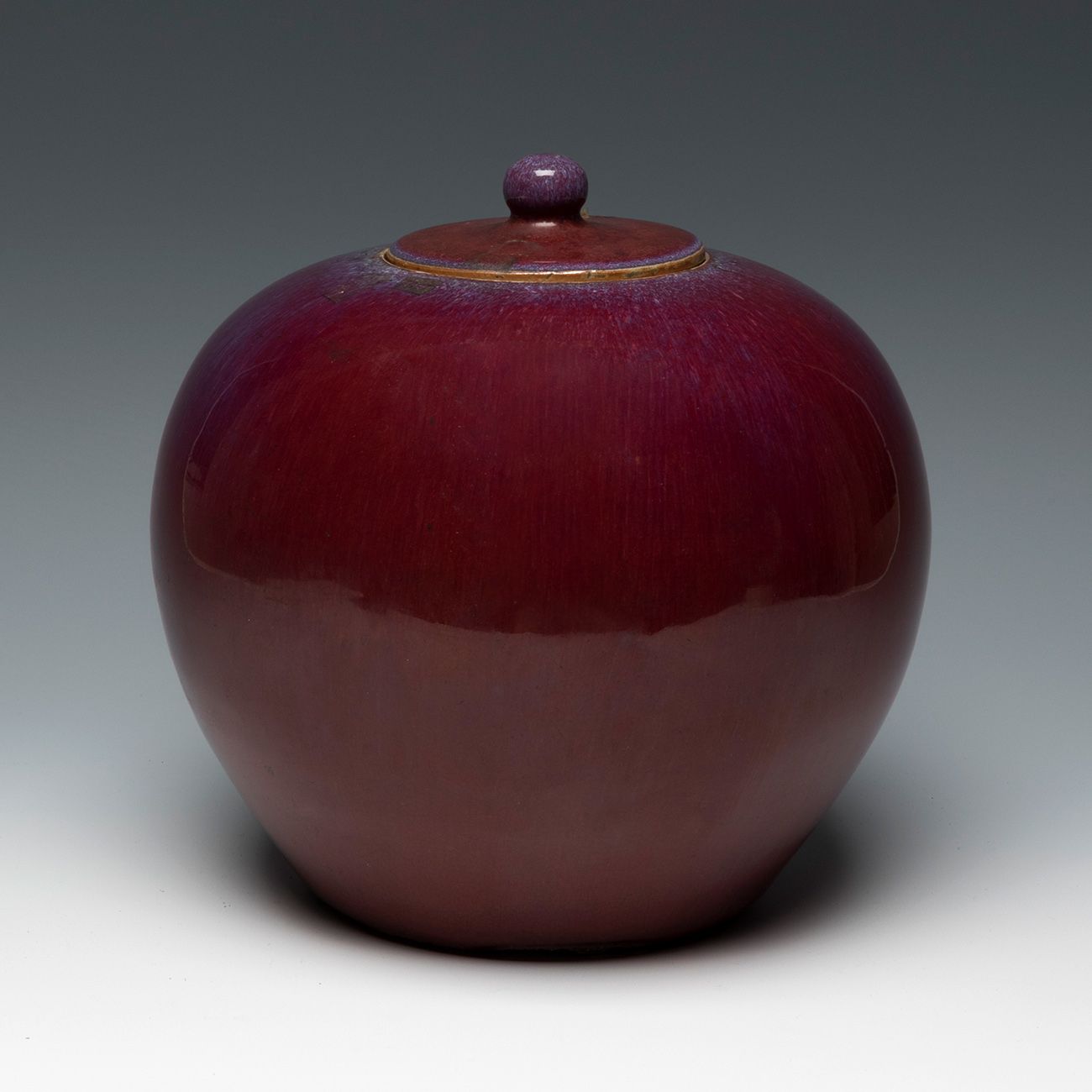Description
Chinese Tibor sang de boeuf. Qing dynasty, 19th century. Sang de boeuf polychrome porcelain. Wear, chipping and irregularities on the base. Measurements: 43 cm (height); 28 cm (largest diameter). Chinese porcelain polychrome sang de boeuf tibor of the Qing dynasty, 19th century, in polychrome porcelain. The sang de boeuf glaze, a deep red ceramic glaze, first appeared on Chinese porcelain in the early 18th century. The name means "ox's blood". Sang de boeuf is a flamed and glazed glaze, marked by unpredictable but highly decorative and varied effects. Tibores, lidded vases, are very popular in Asia. In China, tibores are not only used for decoration, but are also used in the kitchen to store food, tea or utensils. Tibors were very popular especially in stately homes in ancient China.
22
Chinese Tibor sang de boeuf. Qing dynasty, 19th century. Sang de boeuf polychrome porcelain. Wear, chipping and irregularities on the base. Measurements: 43 cm (height); 28 cm (largest diameter). Chinese porcelain polychrome sang de boeuf tibor of the Qing dynasty, 19th century, in polychrome porcelain. The sang de boeuf glaze, a deep red ceramic glaze, first appeared on Chinese porcelain in the early 18th century. The name means "ox's blood". Sang de boeuf is a flamed and glazed glaze, marked by unpredictable but highly decorative and varied effects. Tibores, lidded vases, are very popular in Asia. In China, tibores are not only used for decoration, but are also used in the kitchen to store food, tea or utensils. Tibors were very popular especially in stately homes in ancient China.
